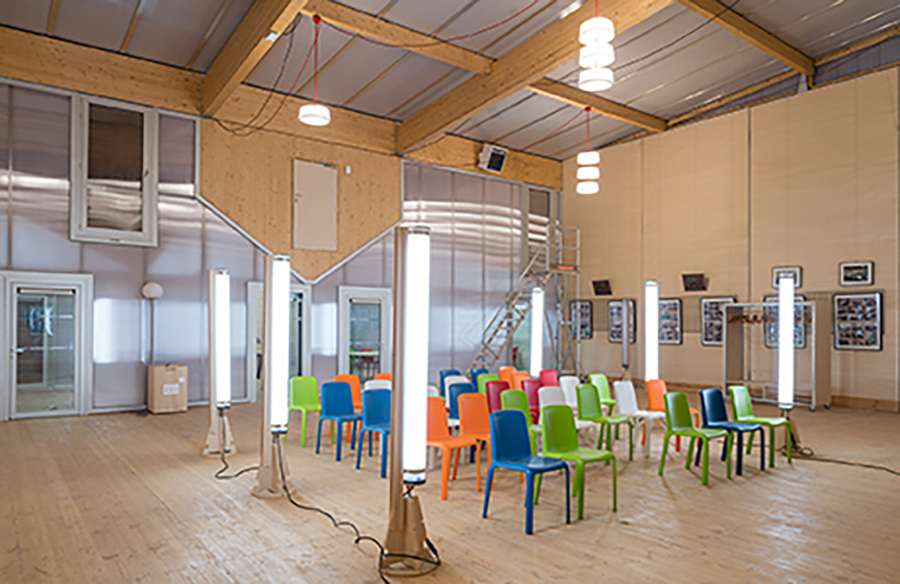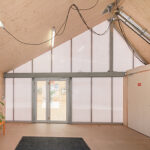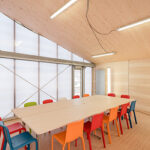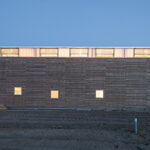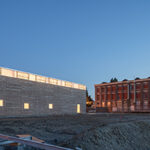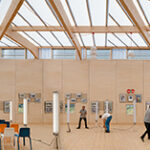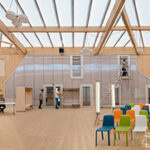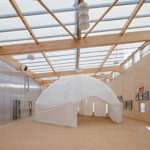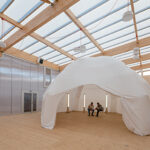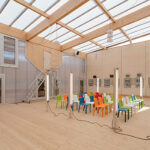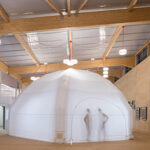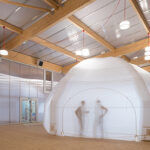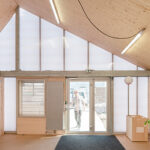Introduction
Following the closure of the factory complexes in Roubaix, the city of Lille embarked on an ambitious urban regeneration plan for an area spanning approximately 1000 hectares, slated for completion over a decade. Central to this endeavor is the Maison du projet, an innovative architectural venture designed by Carlos Arroyo.
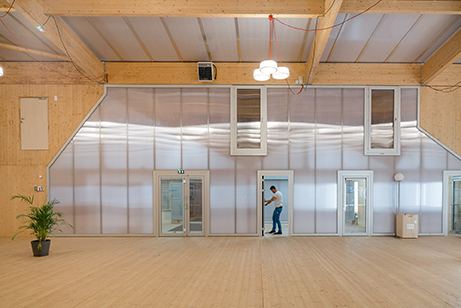
Embracing Circular Economy Principles
The Maison du projet stands as France’s inaugural Cradle to Cradle inspired building, embodying principles of circular economy. With a keen focus on temporality, the project utilized prefabricated elements for rapid assembly on-site, ensuring flexibility for future disassembly and recycling within a decade.
Sustainable Construction Practices
In alignment with Cradle to Cradle principles, the construction process minimized earthworks and employed driven piles for the foundation, enabling potential recovery in the future. The structure and façade are designed for complete disassembly, utilizing biodegradable and recyclable materials. Waste generation is minimized, while renewable energy sources power the building.
Environmental Regeneration and Community Activation
Beyond its ecological footprint, the Maison du projet aims to catalyze economic and cultural revitalization within the area. As an environmental regenerator, it fosters sustainability while serving as a hub for community engagement and empowerment.
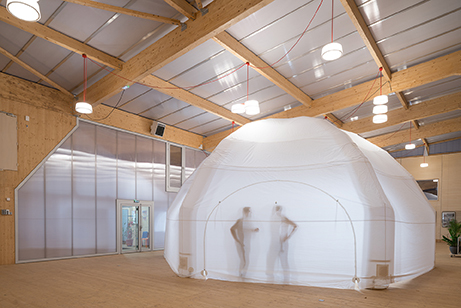
Flexible Design and Adaptive Furniture
Featuring a honeycomb-shaped structure reminiscent of old factory buildings, the Maison du projet offers versatile spaces conducive to various activities. Mobile furniture facilitates seamless customization, allowing for rapid adaptation to evolving needs and uses.
Innovative Energy Management
The building’s structural configuration facilitates efficient energy management, establishing different thermal comfort zones. Heating systems, supplemented by renewable sources, ensure optimal climate control while maximizing energy efficiency. Photovoltaic panels and passive design elements further reduce the building’s carbon footprint.
Water Conservation Strategies
Innovative water management strategies are integrated into the building’s design, exemplifying eco-monumentality. Dry toilets, powered by solar heating, eliminate water consumption, while rainwater harvesting systems support maintenance and gardening needs, promoting sustainability and resilience.
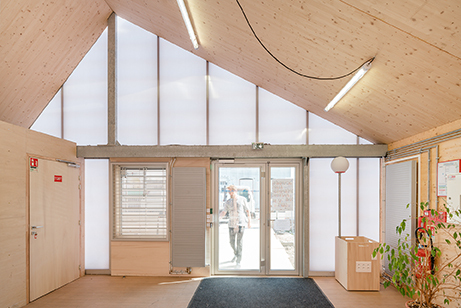
Conclusion
The Maison du projet exemplifies a paradigm shift towards sustainable urban development, blending innovative design with ecological consciousness. As a beacon of environmental stewardship and community empowerment, it heralds a promising future for urban regeneration initiatives worldwide.


